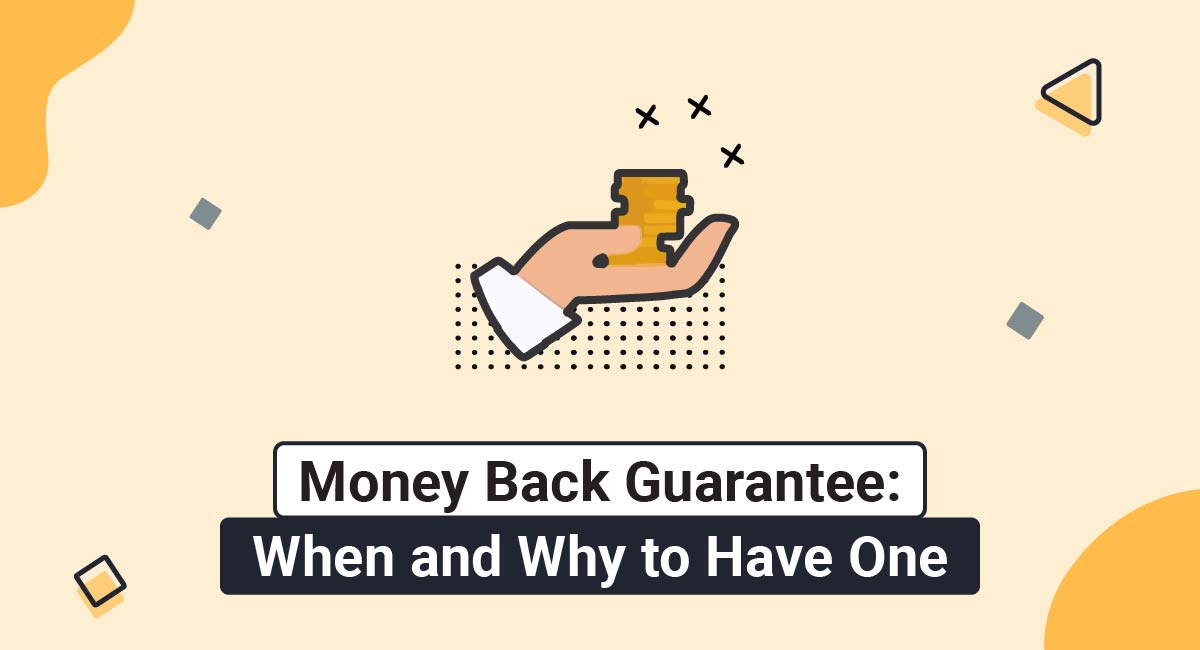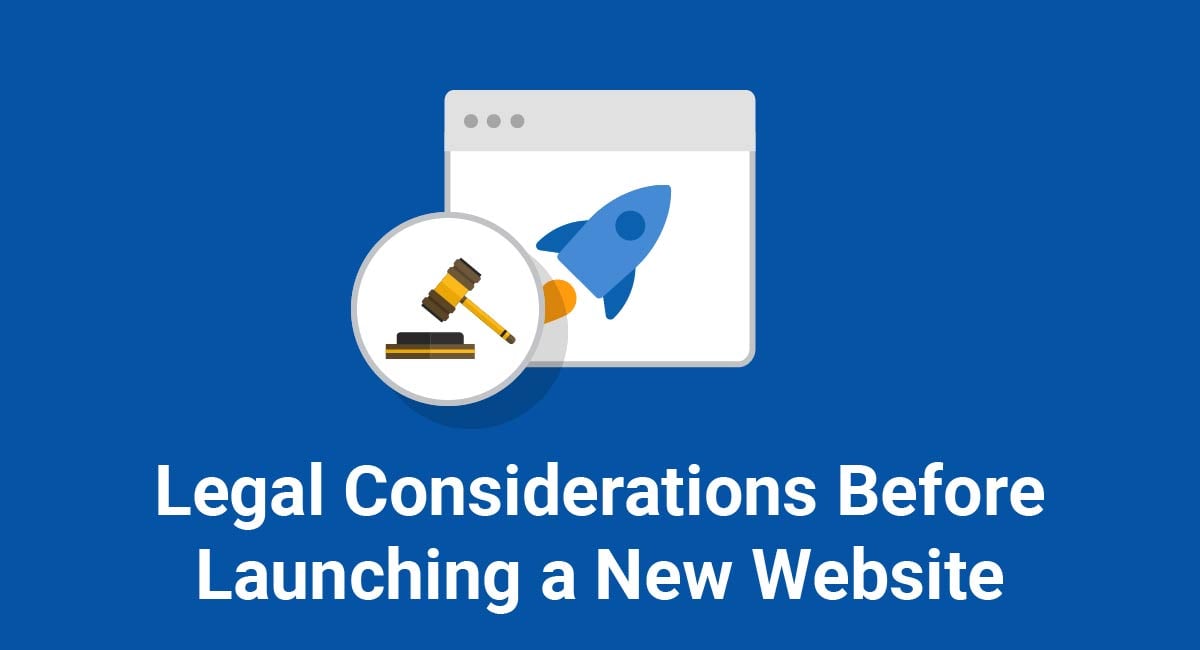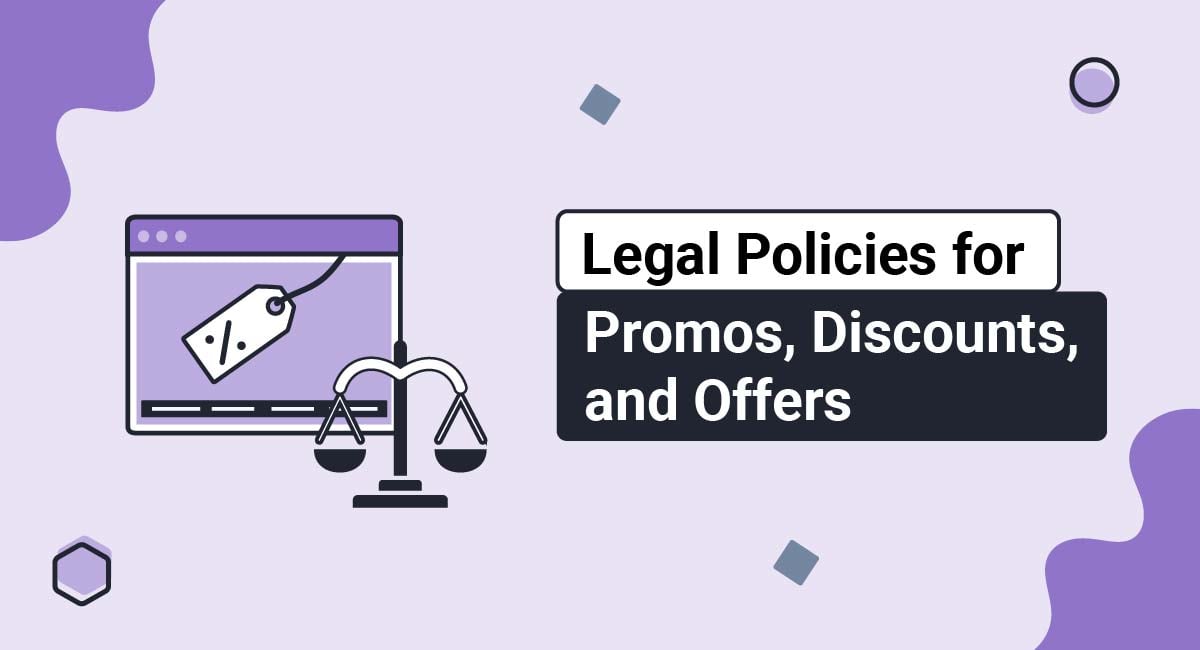Many businesses use a money back guarantee to gain a competitive edge and show consumers that they stand behind their products.
This article explains what a money back guarantee is, why you should have one, whether you are legally required to have a money back guarantee, and how to write and display your money back guarantee.
- 1. What is a Money Back Guarantee?
- 2. Why Should You Have a Money Back Guarantee?
- 2.1. When Your Business is Just Getting Started
- 2.2. When You Want to Enhance Your Reputation
- 3. Are You Legally Required to Have a Money Back Guarantee?
- 3.1. U.S.
- 3.2. EU
- 3.3. UK
- 4. How Do You Write a Money Back Guarantee?
- 4.1. Timeframe to Request Money Back
- 4.2. Return Process Details
- 4.3. What Type of Refund Will be Issued
- 4.4. Any Associated Costs and Who Pays Them
- 4.5. Any Exceptions to the Guarantee
- 5. Where Should You Display a Money Back Guarantee?
- 5.1. On Your Website
- 5.2. Within Your Legal Agreements
- 5.3. On Promotional Materials
- 6. Summary
What is a Money Back Guarantee?
A money back guarantee is a marketing tactic that ensures customers that you will provide them with a refund if your product or service doesn't provide advertised results or function as promised.
A money back guarantee typically explains what product or service it applies to and how customers can get their money back if they aren't happy with their purchase.
Why Should You Have a Money Back Guarantee?
Offering a money back guarantee is a great way to show consumers that you stand behind your product or service. Having a money back guarantee can help you develop a reputation for being a leader in customer service and build consumer trust in your business. Prioritizing your customers is an essential part of providing excellent customer service, which can go a long way in cultivating customer loyalty.
There are a few different circumstances where it makes sense to have a money back guarantee, including when you're launching a new business, when you want to develop a competitive edge, and when you sell products that can easily be returned.
When Your Business is Just Getting Started
Customers can be wary of new businesses (especially online stores) as they don't have the reviews that many customers tend to check before making a purchase. New businesses can use money back guarantees to gain trust, attract customers, and stand out from the competition.
It will show potential customers that there isn't a financial risk in giving your new business a chance.
When You Want to Enhance Your Reputation
You can advertise a money back guarantee on your website, ads, and promotional materials to help establish your business as a reliable, customer-oriented company. Having a money back guarantee can help you outshine competitors (and increase profits).
When You Sell Items That are Easy to Return
Money back guarantees are best used for physical items that can be returned, such as clothing or appliances. Offering a money back guarantee for digital products or services that can't be returned can be a little trickier, but you can use timeframes or other eligibility requirements to protect your bottom line.
Are You Legally Required to Have a Money Back Guarantee?
While you are not legally required to have a money back guarantee, some laws do require you to have the following:
- Have a Return and Refund Policy (a document that outlines your guidelines for returns and explains whether you offer refunds) in certain circumstances
- Fulfill your money back guarantee if you do offer one
- Provide refunds if you fail to comply with Return and Refund Policy requirements
Let's take a look at the laws concerning money back guarantees in the United States, European Union, and United Kingdom.
U.S.
The U.S. doesn't require businesses to offer a money back guarantee, but the Federal Trade Commission (FTC) does require a 3-day cooling-off period for sales made in certain locations, such as at a consumer's home or a temporary retail location.
The FTC's Cooling-Off Rule gives consumers three business days to return certain items purchased at covered locations.
State laws have their own rules on refunds and returns. Many laws require retailers to clearly post their Return and Refund Policy where customers can easily access it. Businesses that don't comply with applicable laws typically have to provide a full refund for eligible items.
California requires retail businesses that don't offer full-cash refunds, exchanges, or store credits to post their Return and Refund Policy. If applicable businesses don't post their Return and Refund Policy then they must provide refunds for any items returned within 30 days of purchase.
Section 1723 of the California Civil Code says that any retail business with a limited Return and Refund Policy must conspicuously display the Policy and that businesses that fail to do so must provide refunds for any items returned within 30 days of purchase:
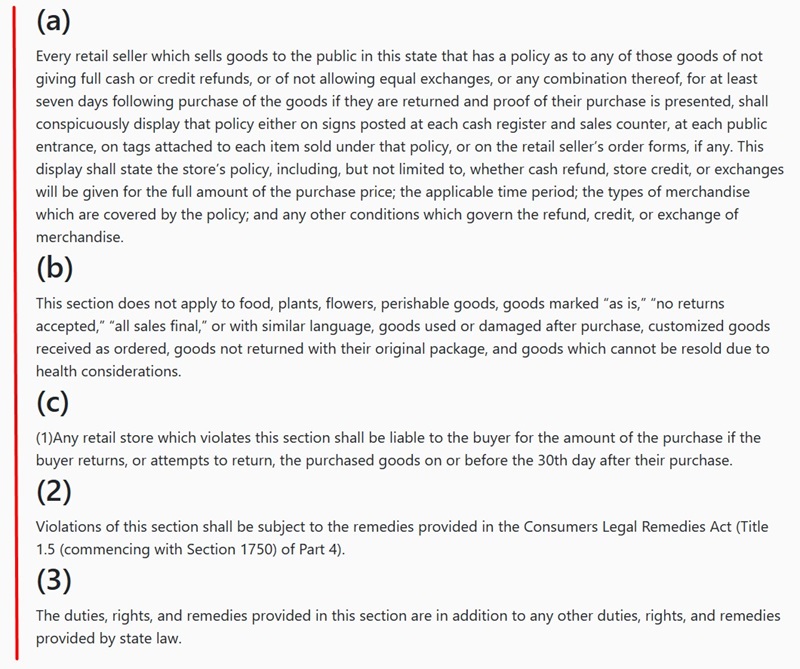
If you advertise a money back guarantee, you should clearly explain how customers can get a refund and fulfill refund requests. Refund laws vary by state, so you should find out which laws apply to you and your customers.
EU
In the EU the Consumer Rights Directive is the main legislation concerning money back guarantees. It requires applicable businesses to allow EU residents to return goods within 14 days of their purchase date. Consumers do not have to give a reason to be eligible for a refund.
Certain items, such as products that quickly deteriorate, digital content, and personalized items are exempt from the rule. If you provide a money back guarantee, you should explain which items the guarantee is for and whether any goods are excluded from the guarantee.
Article 9 of the Consumer Rights Directive explains that EU consumers have the right to a 14-day cooling period, during which they can return items for a full refund:
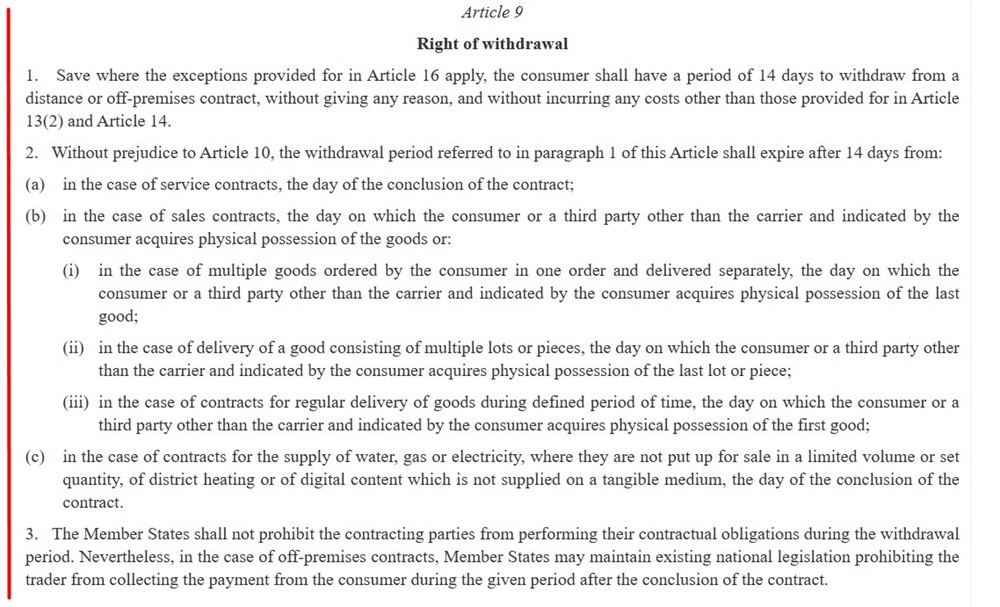
UK
The UK's Consumer Rights Act 2015 gives UK residents certain rights regarding the purchase of goods and services, including digital content.
If an item is defective or doesn't match its description then UK consumers are entitled to a full refund under the law. Customers are also allowed to cancel online orders within 14 days of the purchase date for a full refund, no questions asked.
Section 30 of the Consumer Rights Act 2015 explains that businesses that offer a guarantee to UK residents must clearly explain the contents of the guarantee:
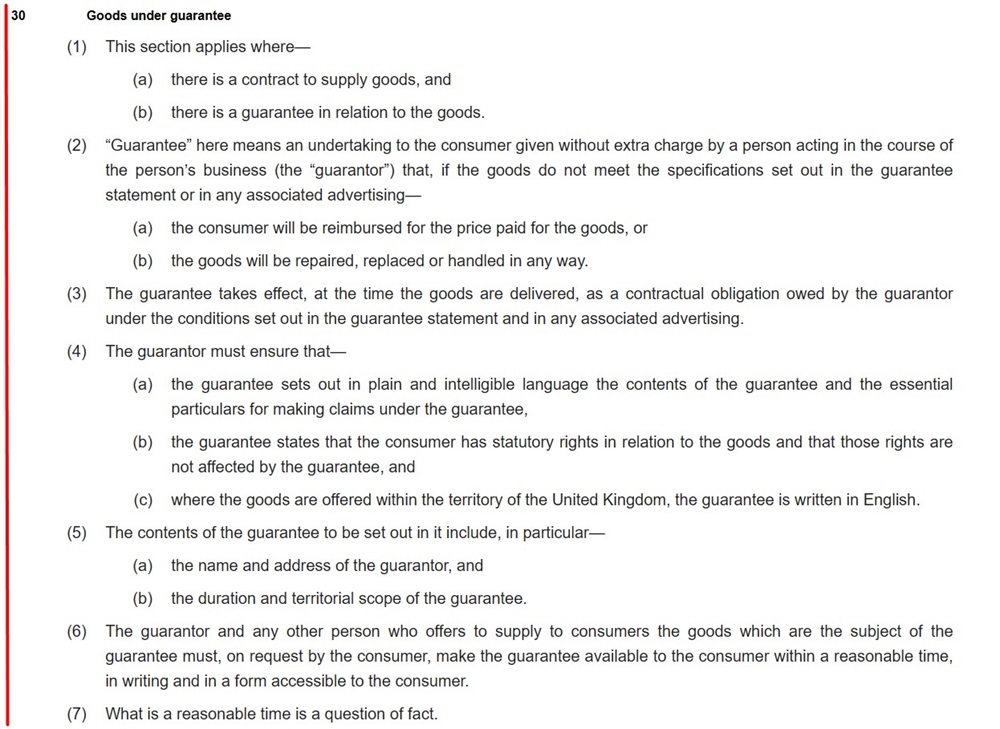
How Do You Write a Money Back Guarantee?
Your money back guarantee should contain a few essential components, including how long the guarantee is good for, how customers can initiate the return process, the type of refund you offer, associated costs, and a list of any items that are not eligible for the guarantee.
Let's examine each of the elements an effective money back guarantee should contain.
Timeframe to Request Money Back
This section of your money back guarantee should explain how long the guarantee is good for. It should cover the length of time customers have to return an item, and when customers can expect to receive their refund.
Downy's Money Back Guarantee lets consumers know when the guarantee expires and informs them that their refund requests must include a receipt postmarked within 30 days of the purchase date:
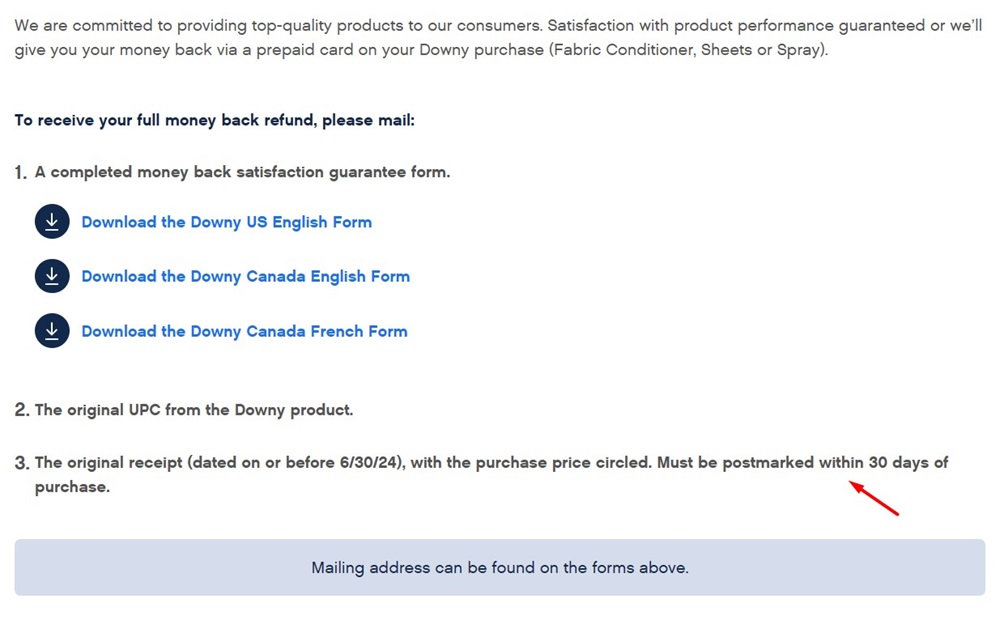
Always' Money Back Guarantee lets consumers know that they have 60 days from their purchase date to return an item and get their money back:
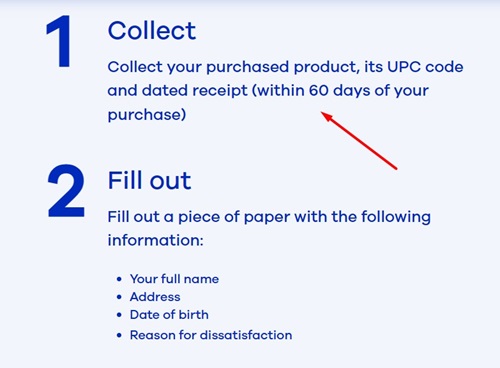
Touch 'n Go's Money Back Guarantee lets users know that it will provide a full refund within 5 days of the conclusion of its investigation:
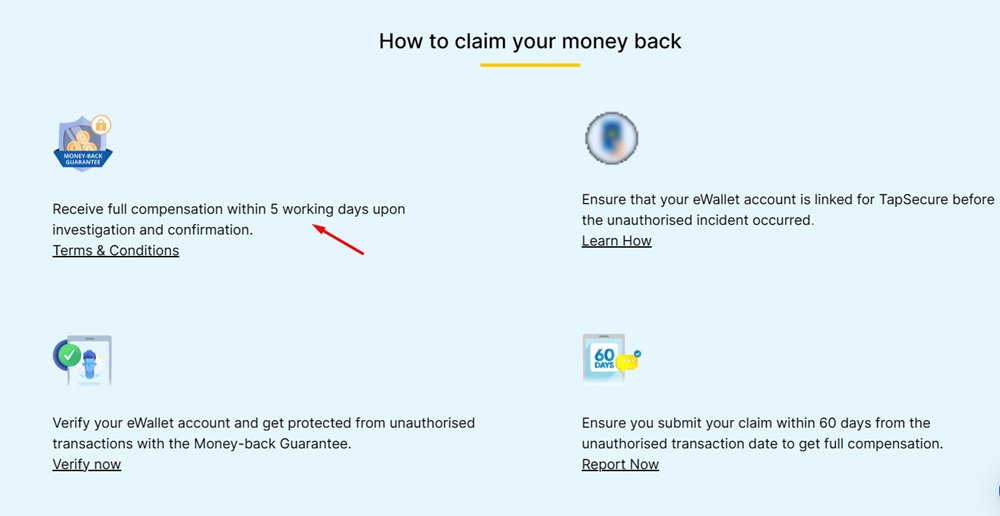
Return Process Details
Your money back guarantee should explain if consumers need to return an item in order to get a refund, and if so, how to start the return process.
You should let customers know:
- What condition an item needs to be in to be eligible for a refund
- How long after the purchase date customers can return an item
- Whether customers need to provide a reason for returning an item
- Where items should be returned to
- Who is responsible for return shipping fees
eBay's Money Back Guarantee explains that returned items must be in the same condition as they were received and that depending on the seller's Return Policy, buyers may be responsible for return shipping costs:
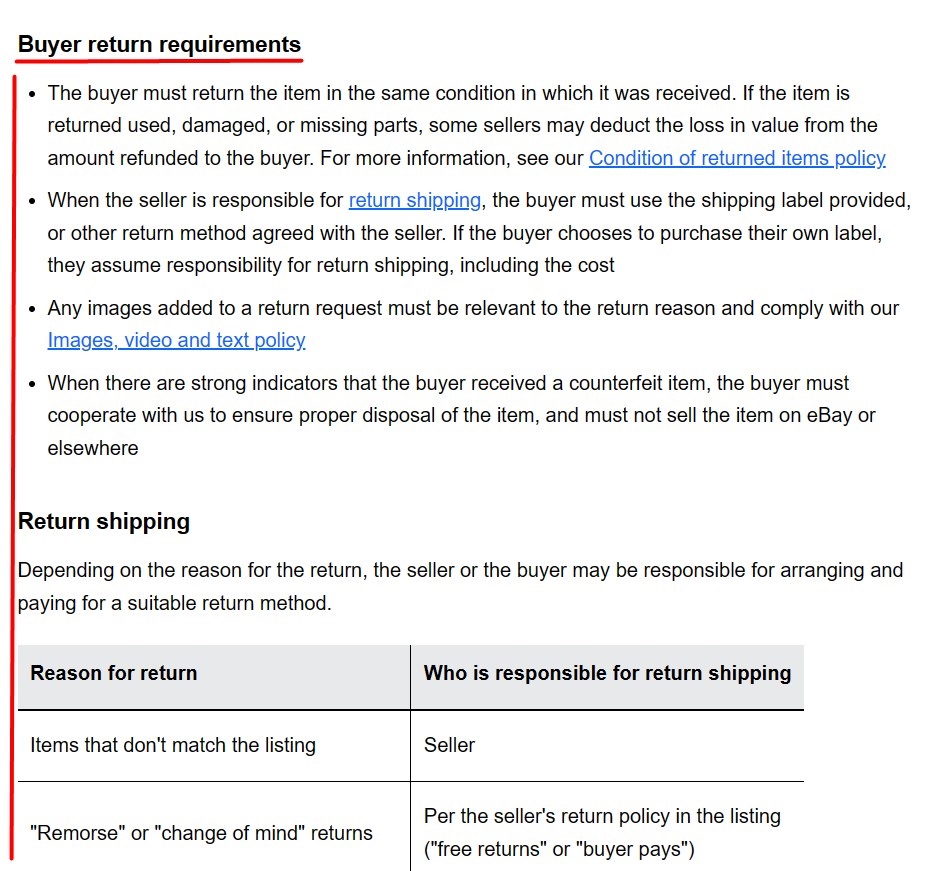
ALDI's Twice as Nice Guarantee Return Policy states that customers can return any product they are not satisfied with to get a replacement product and a full refund as long as they have a receipt. If they don't have a receipt, ALDI will give them a gift card equal to the current retail price of the product:
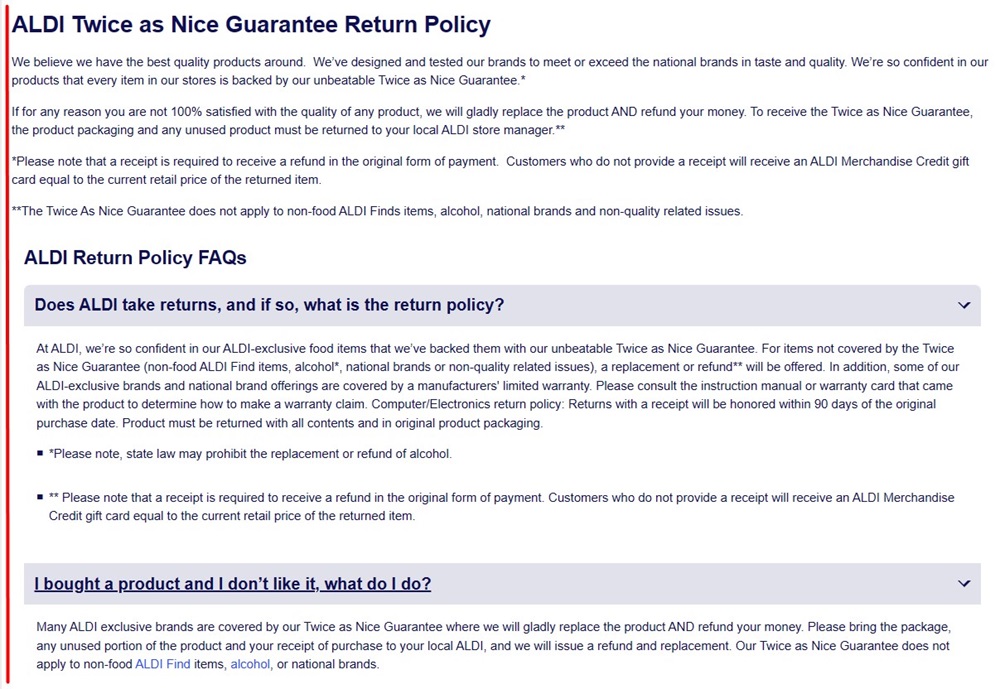
What Type of Refund Will be Issued
You should explain the format in which customers can expect to receive their refunds.
Common refund types include:
- Full refund
- Partial refund
- Store credit or equal exchange
If you provide a 100% money back refund, you should let customers know how they will get the refund back. Common refund options include returning the money to a customer's original payment source or sending it to them via prepaid card or mailed check.
Swiffer's Money Back Guarantee form explains that customers will get their refund via a prepaid card:
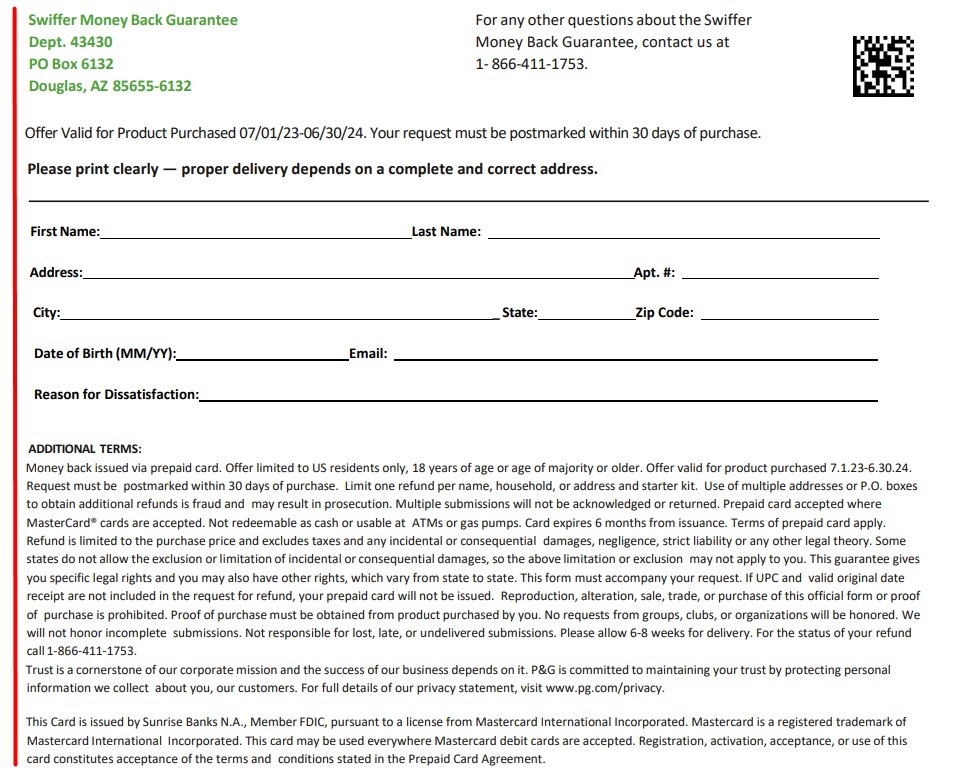
Poise's Money Back Guarantee form lets customers know that they should receive a refund via reimbursement check within 8-10 weeks of submitting their refund requests:
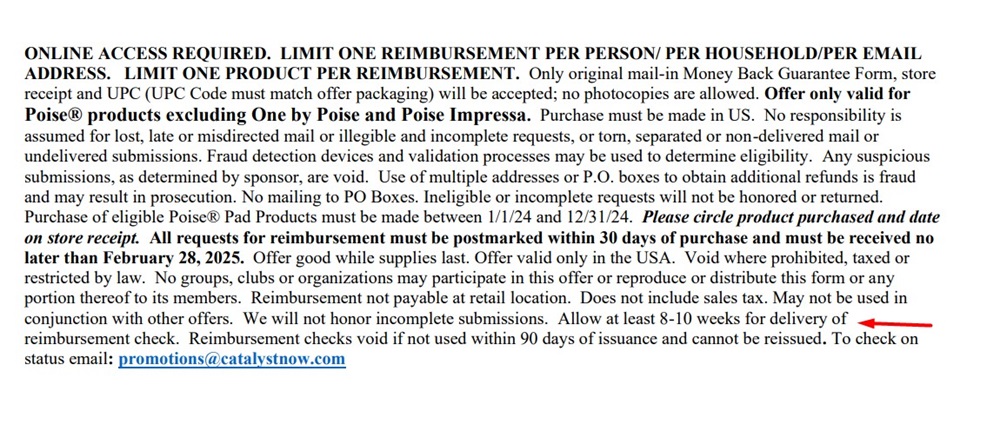
Any Associated Costs and Who Pays Them
This section of your money back guarantee outlines any costs associated with obtaining the refund, such as shipping costs for returning an item or any other fees.
MyPillow's 60-Day Money Back Guarantee lets users know that customers must pay return costs:
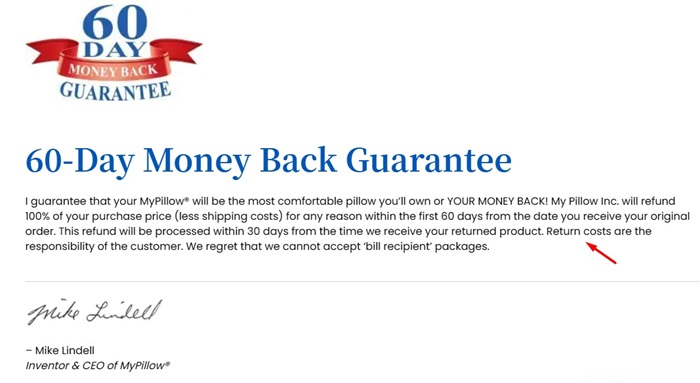
The Keystone School's Money Back Guarantee explains that customers are responsible for paying shipping and handling and administrative fees:
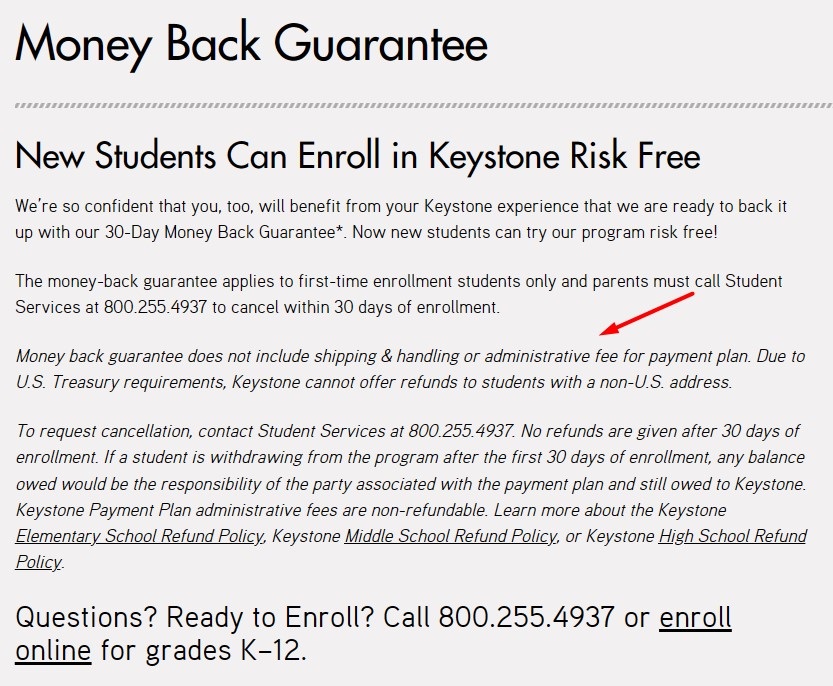
Any Exceptions to the Guarantee
You should let consumers know if there are any exceptions to your money back guarantee, if you sell items that are not eligible for your money back guarantee, or if items need to be in a specific condition to be returned.
Costco's Risk-Free 100% Satisfaction Guarantee lists exceptions to merchandise returns, including alcohol, cigarettes, gold, and gift cards:
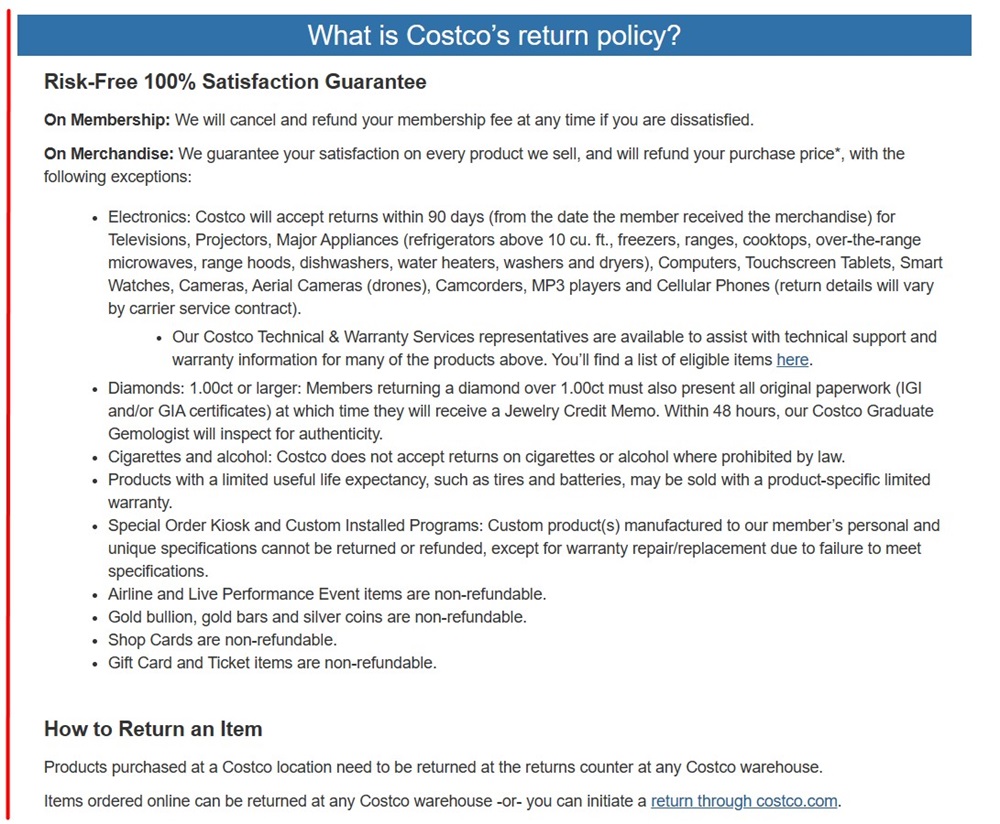
Udemy's Refund Policy lists the reasons why it may deny full-refund requests for its courses, including excessive requests or requests made more than 30 days after the purchase date:
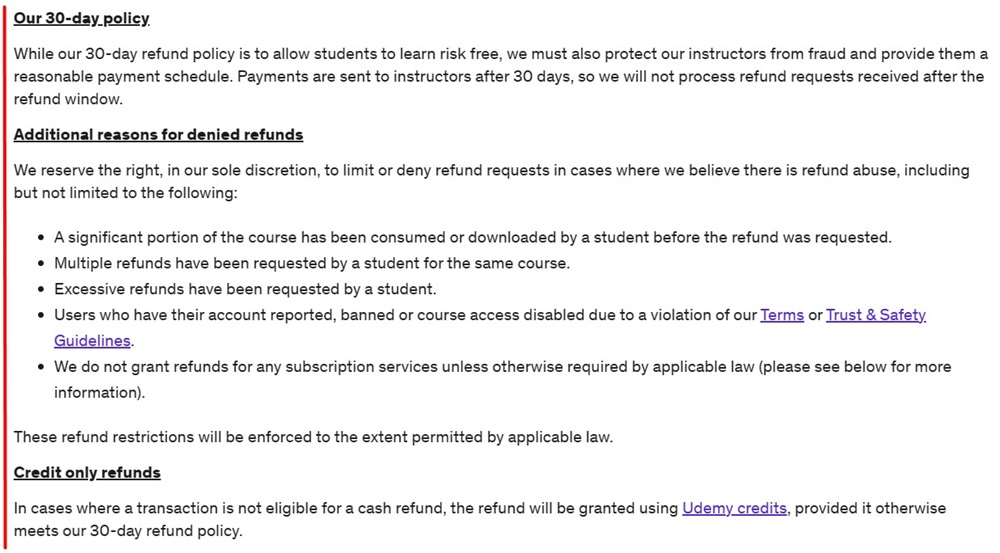
Where Should You Display a Money Back Guarantee?
It's important to display your money back guarantee somewhere customers can easily access it.
Common places to put your money back guarantee include on your website, within your Terms and Conditions agreement (a legal document that lists the rules and responsibilities consumers must agree to in order to use your services), and on promotional materials.
On Your Website
Many businesses advertise their money back guarantee in a static location on their website so that users can see it no matter what page they navigate to.
eBay maintains a link to its eBay Money Back Guarantee in its website footer so that visitors can easily access it:
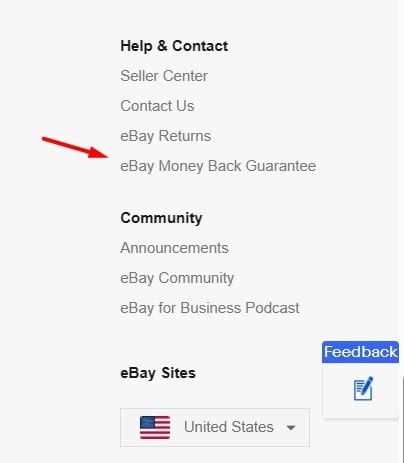
When users navigate to the Our Commitment tab in Swiffer's header, they have the option of selecting its money back guarantee one year warranty from a drop-down menu:
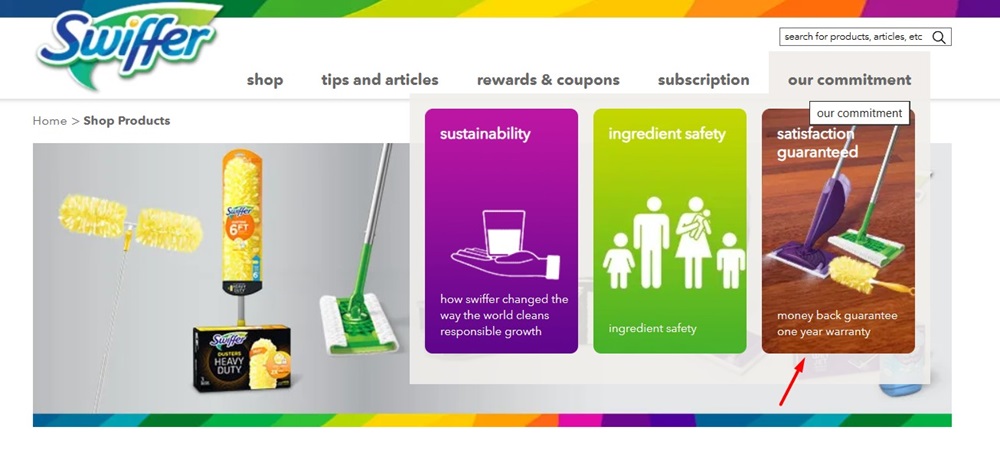
Within Your Legal Agreements
Some businesses put their money back guarantees within their Terms and Conditions agreements (also called Terms of Service agreements or just Terms) or Return and Refund Policies.
A Terms and Conditions agreement is a good place to put your money back guarantee, as it lists other information that consumers need to know to use your products or services, and customers know to look for refund information within a Return and Refund Policy.
Touch 'n Go includes its Money Back Guarantee for unauthorized transactions within its Terms and Conditions agreement:
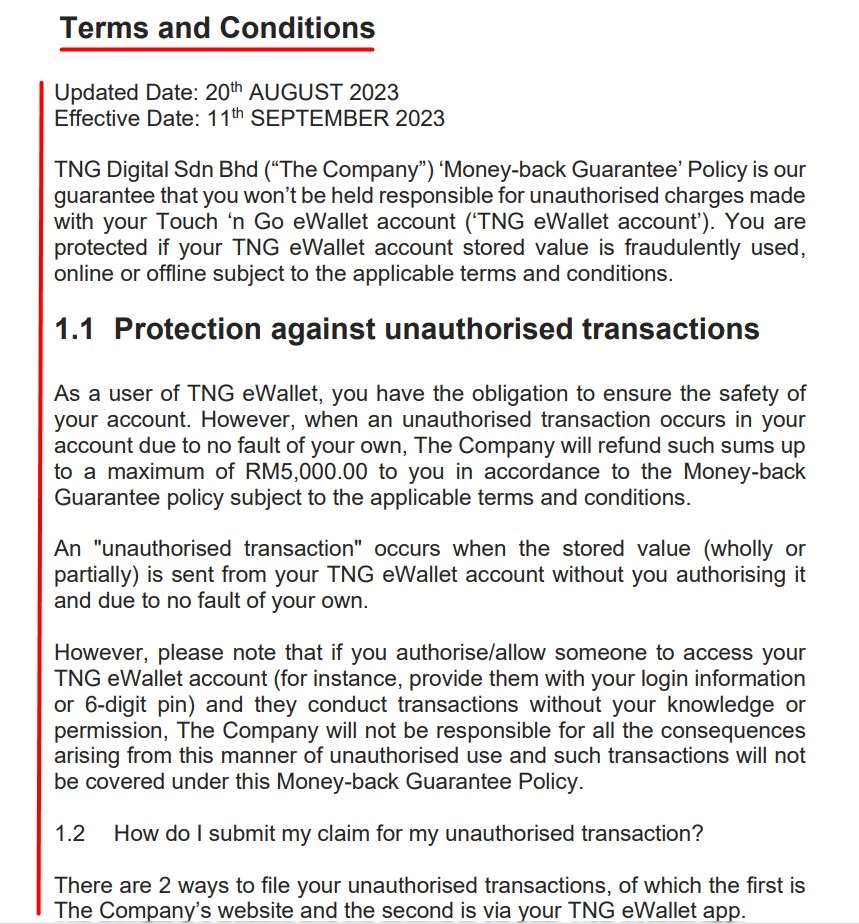
Mint Mobile's Return Policy explains that users can return their item within seven days of the purchase date for a full refund:
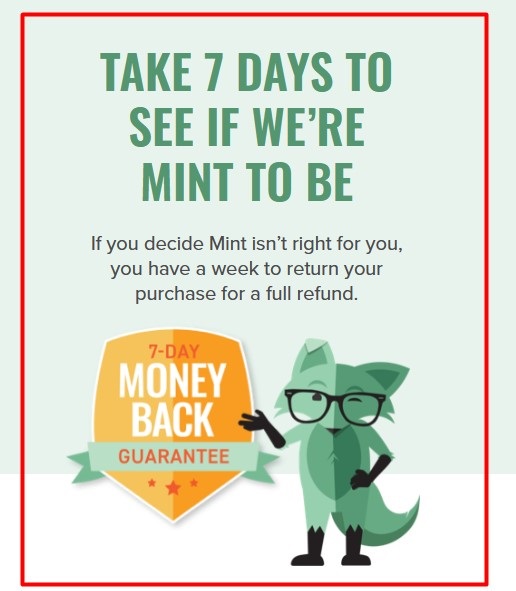
On Promotional Materials
Money back guarantees are an effective form of marketing and can be included in all kinds of promotional materials, including emails, pop-up boxes, and ads.
WayBetter's marketing email advertises its 100% money-back guarantee:
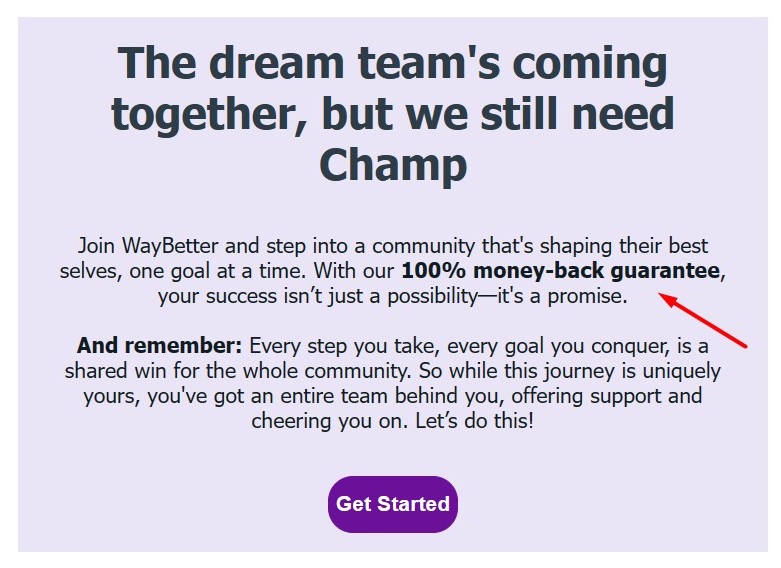
Dawn Ghostwriting's Facebook ad uses its money back guarantee to attract potential customers:
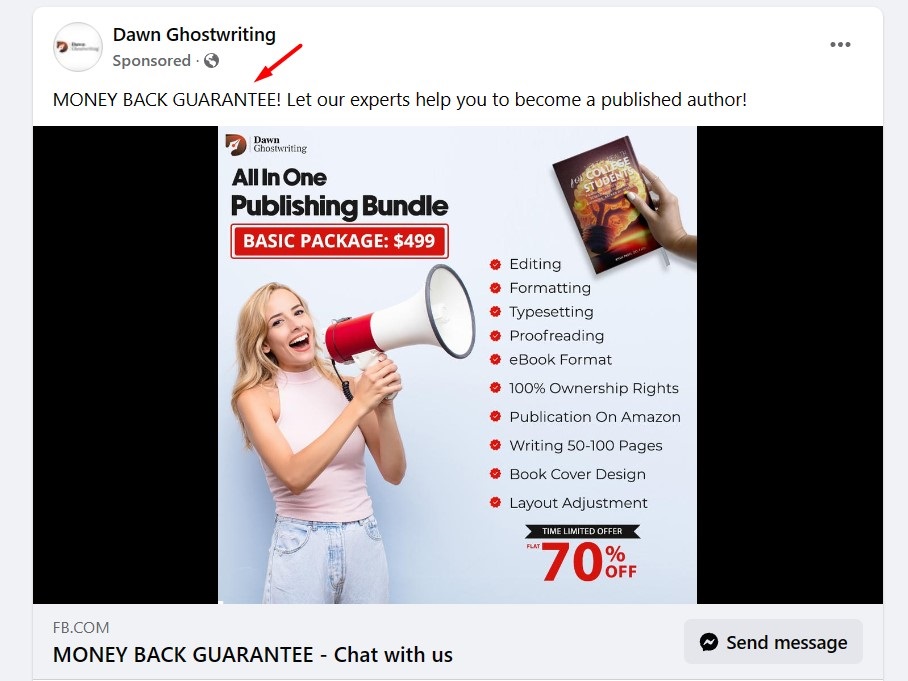
Summary
A money back guarantee is a promise you make to your customers that you will return their money to them if they are not satisfied with their purchase.
The benefits of having a money back guarantee include:
- Developing a reputation as a trustworthy business
- Generating customer loyalty
- Attracting customers and increasing profits
- Standing out against your competition
You should have a money back guarantee when:
- You're starting a new business
- You want to build your brand's reputation
- You sell items that are easily returnable
No state or global laws require you to have a money back guarantee. However, there are laws (including the FTC's Cooling-Off Rule, state laws, the EU's Consumer Rights Directive, and the UK's Consumer Rights Act 2015) that may require you to have a Return and Refund Policy and to follow through on any guarantees you do have.
If you choose to write your own money back guarantee, you should ensure that it contains the following information:
- The timeframe for returning an item and receiving a refund
- How customers can start the return process
- What refund types you offer and the form in which customers will receive their refund
- Any fees associated with returning an item or receiving a refund
- A list of items that are ineligible for return or situations that the money back guarantee doesn't apply to
You should display your money back guarantee where customers can easily find it, such as on your website, within your Terms and Conditions agreement, and on your promotional materials.

Comprehensive compliance starts with a Privacy Policy.
Comply with the law with our agreements, policies, and consent banners. Everything is included.
